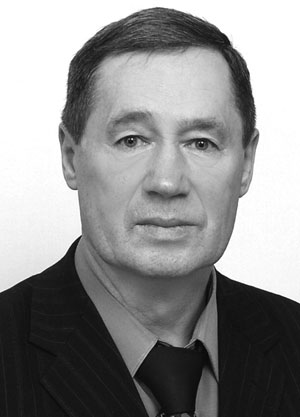Technique of grand swing backward from handstand in a handstand on parallel bars in skill acquiring phase
Фотографии:
ˑ:
Dr.Hab, Professor O.I. Zagrevskiy
Dr.Hab, Professor V.I. Zagrevskiy
National Research Tomsk State University, Tomsk
Keywords: exercise technique, hip joints, shoulder joints, ability, skill, phase.
Introduction. It is well known that competent control of formation of motor skills is impossible in principle without deep and intimate knowledge of the rules of structural organization and technique of exercises [1, 4]. Therefore, special focus has been put on the study of the technique of performance of gymnastic exercises [2]. We assume that today there is, unfortunately, a lack of the studies dedicated to the biomechanical analysis of the technique of performance of gymnastic exercises, which makes their development so relevant.
The purpose of the study was to analyze the biomechanical indicators of the technique of performance of the gymnastic exercise "grand swing backward from handstand to handstand on the parallel bars" in the motor skill acquiring phase in the structural-phase context.
Results and discussion. The examined gymnastic element performed by two gymnasts: Master of Sports of Russia and Honored Master of Sports of Russia M. Devyatovskiy, was taken as a model to analyze the technique. The exercise technique demonstrated by the Master of Sports of Russia corresponded to the motor skill level. The gymnast performed the exercise, but with minor errors: with the arms bent, lack of rhythm, too high amplitude of flexion-extension movements in the shoulder and hip joints. The exercise technique of M. Devyatovskiy corresponded to the stage of formation of motor skill. He demonstrated the exercise in different conditions accurately, effectively and consistently. The exercise technique demonstrated by the Master of Sports of Russia (Fig. 1) was compared with that demonstrated by M. Devyatovskiy (Fig. 2).
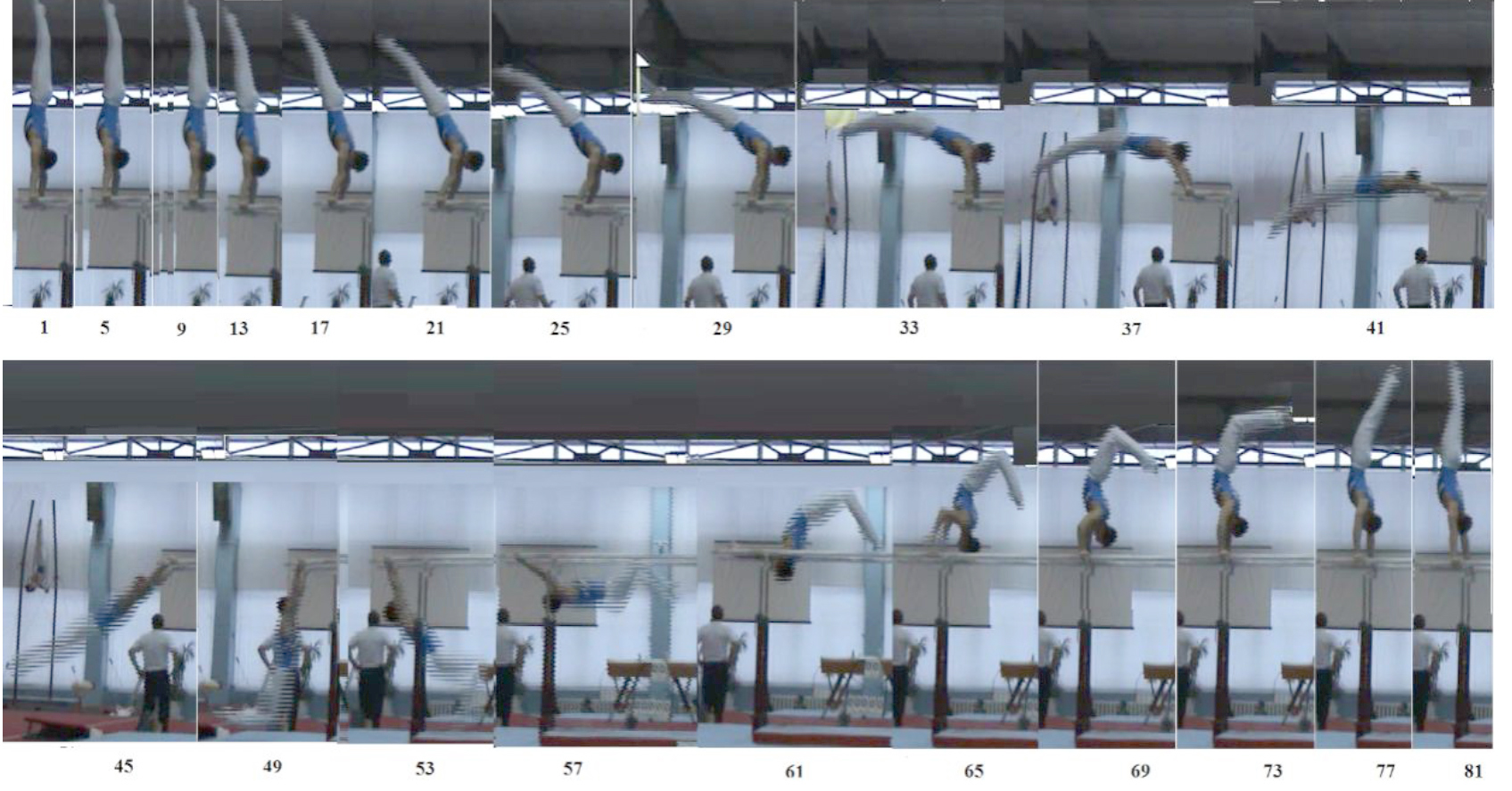
Fig. 1. Technique of "grand swing backward from handstand to handstand on parallel bars" by gymnast A at the stage of motor ability formation
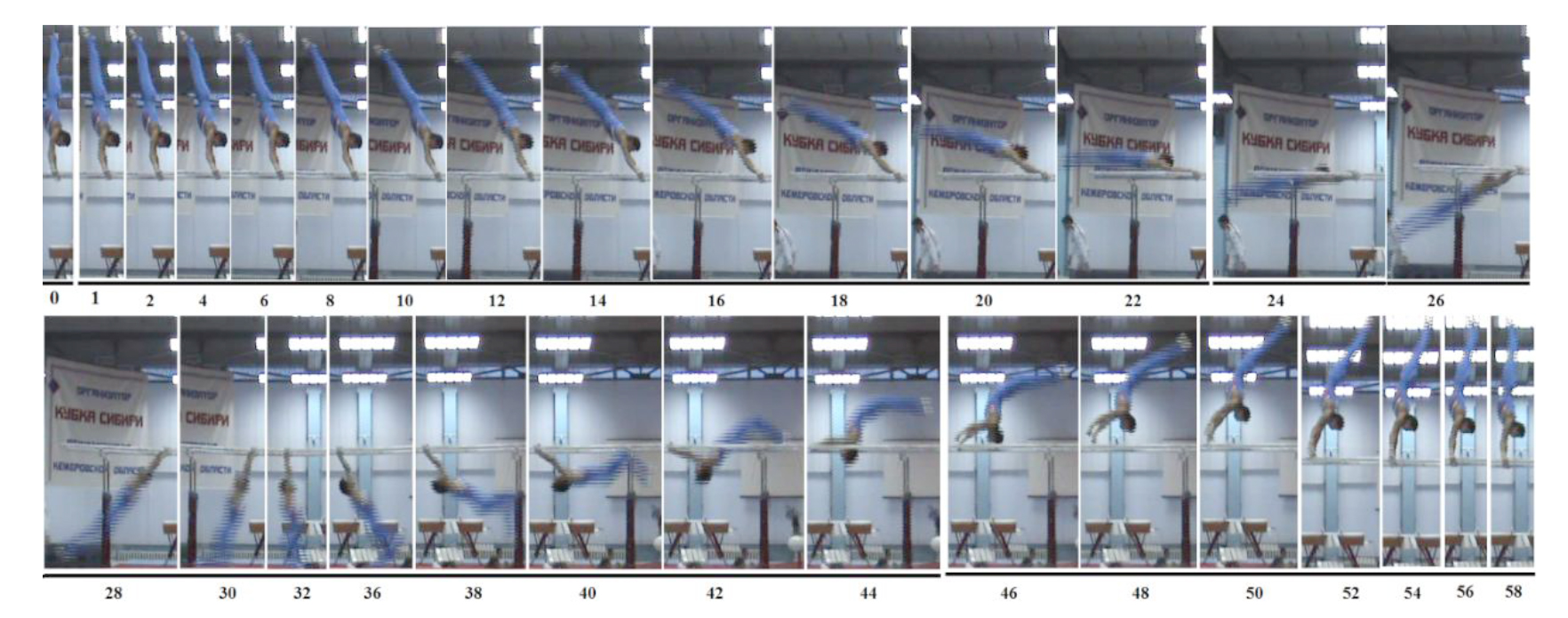
Fig. 2. Technique of "grand swing backward from handstand to handstand on parallel bars" by gymnast B at the stage of motor skill formation
First of all, according to the concept of Yu.K. Gaverdovsky [1], periods, phases of natural movements, stages, phases of action were allocated in the structure of the examined exercise. The periods were divided into (Fig. 2):
- first support (athlete's movement when contacting with the support - Frames 0-45) including two stages: preparatory, consisting of two phases of action - "kip", "layaway to swing", and main one, also consisting of two phases - "cast" and "countertempo";
- flight (athlete's movement in the airborne phase - Frames 46-51), consisting of the realization phase, that includes the flight phase - the "flight";
- second support (handstand on the bars after the flight period of the exercise - Frames 52-58) including the final stage of the exercise and consisting of two phases: "re-grasp" and "preparation for the next exercise."
The element performed by the gymnast A was structured in a similar way. The pedagogically structured "grand swing backward from handstand to handstand on parallel bars" is illustrated in Fig. 3.
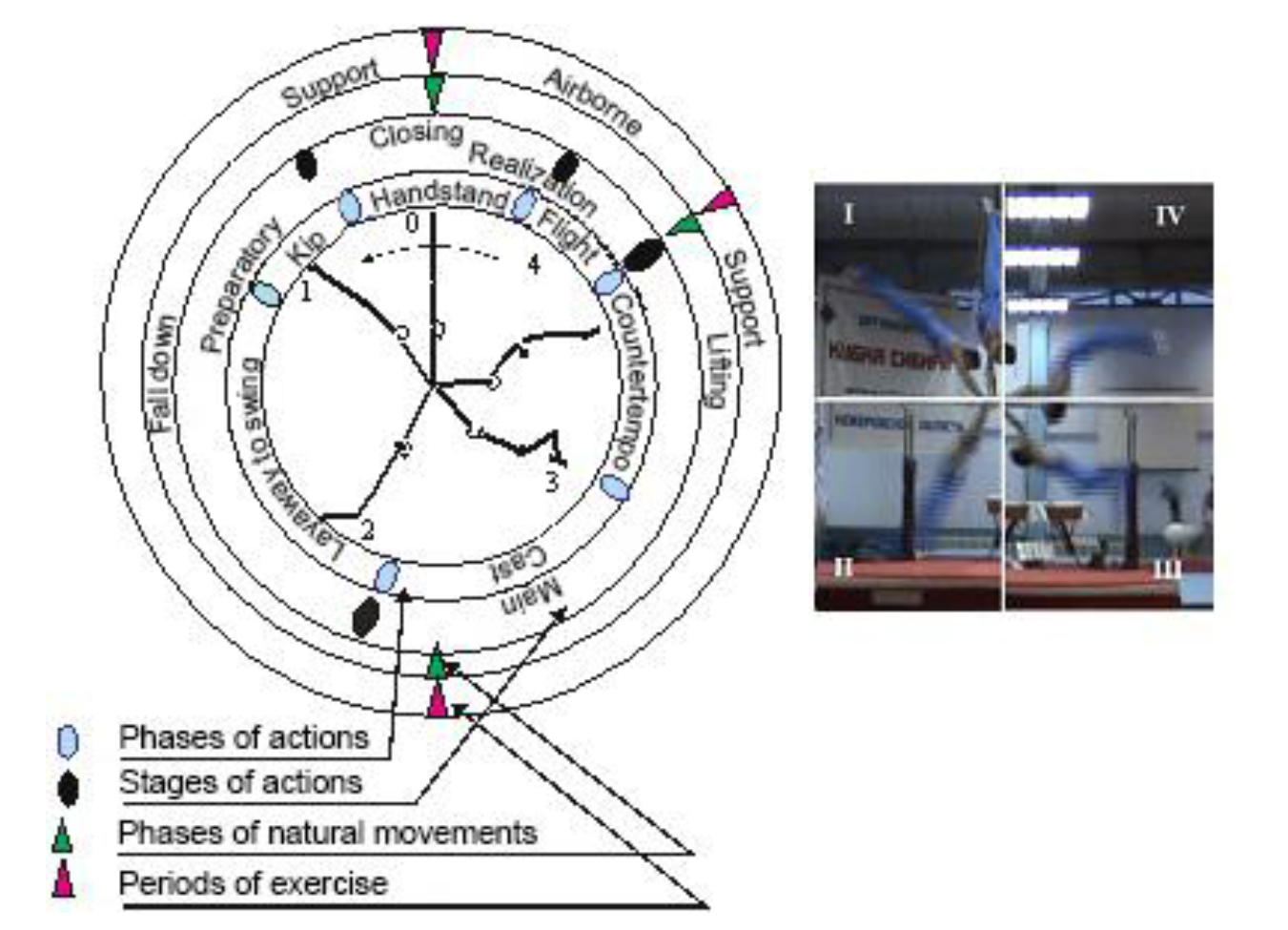
Fig. 3. Pedagogically structured gymnastic exercise "grand swing backward from handstand to handstand on parallel bars"
Preparatory stage. It consists of two phases - "kip" and "layaway to swing".
The "kip" phase. The gymnast's initial position is projected onto the hands (Fig. 2, Frame 0), is formed by arms, torso and legs with 1800 angle in the shoulder and hip joints. The body of an athlete is "fully extended" in line.
During further realization of the "kip" and "layaway to swing" phases (Fig. 2, Frames 0-28), the athlete's body and body units take the most effective position relative to the support to complete the "cast" phase. The angle, formed by the vertical axis and the radius-vector of the CCM (common center of mass) of the gymnast equal to 2300, is typical for the orientation program (Fig. 3, Quadrant II). At this point, the muscles of the front surface of the gymnast's body are optimally stretched, which provides an active "casting" movement (flexion) in the shoulder and hip joints, as pre-stretched and optimally strained muscles are contracted at a faster rate [1, 3].
Main stage. It consists of two phases - "cast" (Fig. 2, Frames 29-36) and "countertempo" (Frames 37-42)
The main objective of the "cast" phase is to bend at shoulders and hips strongly enough to increase the speed and amplitude of the body movement. It should be noted that the flexion starts simultaneously in the shoulder and hip joints (Frame 29). The gymnast passes the vertical at the bottom (Fig. 2, Frame 32) being slightly arched in the shoulder (1810) and hip (1810) joints. Precisely this slightly arched position of the body when passing the vertical at the bottom is technically correct for the gymnast. At this point bending at hips and shoulders is unacceptable, since it is deemed an execution error.
The "cast" phase is performed fast (0.24 - 0.28 s), changing the shoulder angle in the amplitude of 600 and the hip angle up to 1600 respectively (out of the maximally arched position - Fig. 2, Frame 29, to the maximally bent one - Fig. 2, Frame 36 - the hip joint; Frame 42 - the shoulder joint). Such powerful flexion in the joints is supported by great muscle tension - the control moments of the muscle force (Fig. 4). Their analysis has revealed that at this moment the muscles - shoulder flexors and hip flexors realize the greatest muscle efforts: in the shoulder joints - 397 Hm (Fig. 4, Frame 37), in the hip joints - 157 Hm (Fig. 4 , Frame 36).
During the extension movements in the "countertempo" phase, the shoulder extensor muscles are under the load of 197 Hm (Fig. 4, Frame 42), the hip joints - 119 Hm (Fig. 4, Frame 41). The minus sign (-) indicates the work of the extensor muscles.
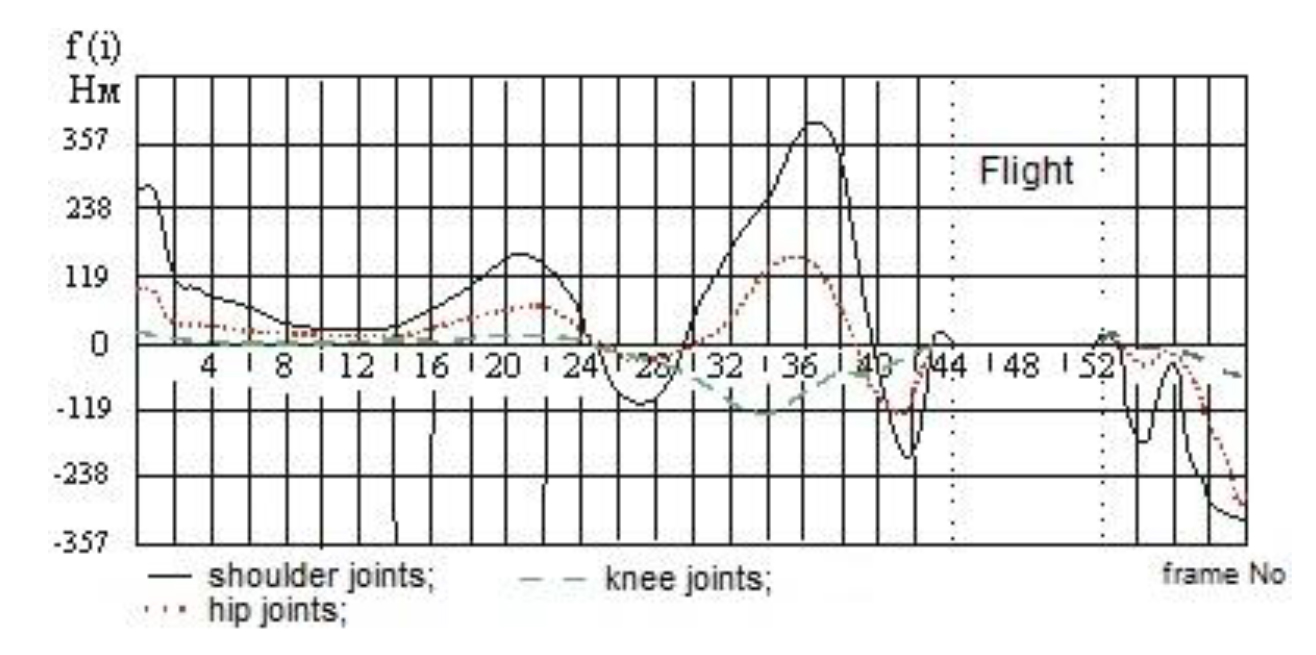
Fig. 4. Control moments of muscle force in joints when performing "Grand swing backward from handstand to handstand on parallel bars"
During the realization stage (Fig.2, Frames 44-49) the resultant velocity of the CCM in the early "flight" phase equals 4.3 m/s. The flight time of the gymnast prior to placing his hands on the support amounts to 0.48 s, the CCM reaches 0.82 m height over the bars. These parameters of the examined exercise enable the gymnast to perform the exercise with his arms extended.
Conclusions. The main difference between the technique "grand swing backward from handstand to handstand on parallel bars" at the stage of formation of motor ability and motor skill is as follows:
-
Unlike the gymnast B, the gymnast A performs the "back off" with his arms extended forward from the support, and his shoulder angle reduces from 1800 to 1140 (Fig. 1, Frame 30), as well as his hip angle. As a result, the radius of rotation of the body units and CCM against the support decreases, and consequently, there is a decrease in the positive moment of gravitational force. Owing to this, the speed of the gymnast's rotation on the support in the back off phase increases slightly, at least this acceleration is milder than that of the gymnast B.
-
Why does the gymnast A have lower speed of body rotation during the "back off"? In our opinion, one of the reasons is that at the stage of formation of motor ability the gymnast has no time to duly perform the required flexion-extension movements in the shoulder and hip joints at high speed. Coordination of motor actions is also hindered due to the reduced time for their realization. Therefore, at the stage of formation of motor skills the gymnast's actions aimed at the rotation speed reduction in the "back off" phase are absolutely justified.
We did not observe the gymnast B to extend his arms forward from the support, and the shoulder and hip angles reduced insignificantly (by 7-100). The gymnast strives to keep the shoulder angle (at about 1800), and his entire body swings down-backwards. This technique helps the gymnast accelerate the body rotation, which is required at the stage of formation of motor skill.
-
The flexion-extension movements in the shoulder and hip joints of the gymnast A had higher amplitude in individual phases of turnover than those of the gymnasts B. The gymnast B performed more accurate flexion-extension movements in space and time, they started simultaneously in the shoulder and hip joints, and their amplitude was optimal.
-
The control moments of muscle force when repeating the turnover at the stage of formation of motor ability were stable (gymnast B). At the stage of formation of motor skill (gymnast A) no stability was observed, and we detected high variability.
-
Visually, it is the gymnast B who performs the exercise better and without errors. He does that accurately, with high amplitude, with straight arms. The gymnast A performs the exercise with errors, with bent arms, with smaller amplitude of the entire performance, with "broken" rhythm, which characterizes his performance as uncertain. Thus, at the stage of formation of motor ability we noticed a wider scatter of biomechanical parameters of the gymnast's actions-movements than at the stage of formation of motor skill.
References
- Gaverdovskiy, Yu.K. Obuchenie sportivnym uprazhneniyam. Biomekhanika. Metodologiya. Didaktika (Teaching Exercise. Biomechanics. Methodology. Didactics) / Yu.K. Gaverdovskiy. – Moscow: Fizkul'tura i sport, 2007. – 912 P.
- Zagrevskiy, V.I. Postroenie optimal'noy tekhniki sportivnykh uprazhneniy v vychislitel'nom eksperimente na PEVM: monografiya (Design of optimal exercise technique in computing experiment: monograph) / V.I. Zagrevskiy, D.A. Lavshuk, O.I. Zagrevskiy. – Mahilyow: MGU im. A.A. Kuleshova, 2000 – 190 P.
- Zagrevskiy, O.I. Postroenie tekhniki dvigatel'nykh deystviy gimnastov v uprazhneniyakh na brus'yakh (Construction of technique of motor actions of gymnasts in bar exercises) / O.I. Zagrevskiy. – Tomsk: Pub. h-se of Tomsk State Pedagogical University, 1999. – 112 P.
- Kapilevich, L.V. Fiziologicheskie mekhanizmy koordinatsii dvizheniy v bezopornom polozhenii u sportsmenov (Physiological mechanisms of motor coordination of athletes in unsupported position) / L.V. Kapilevich // Teoriya i praktika fiz. kul'tury. – 2012. – № 7. – P. 45–48.
Corresponding author: kapil@yandex.ru


